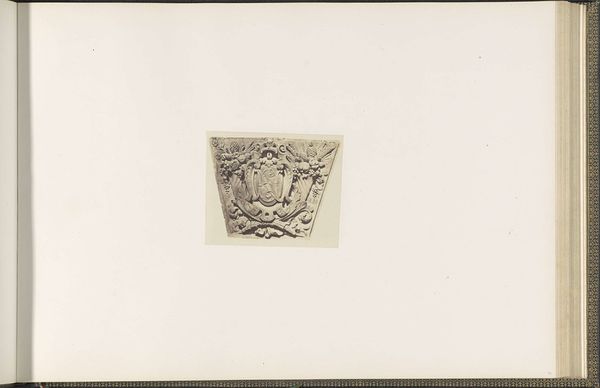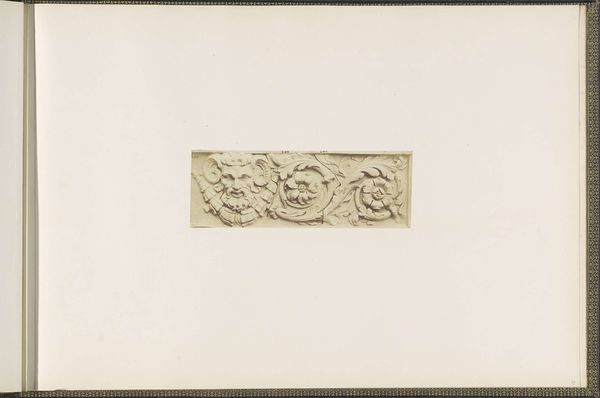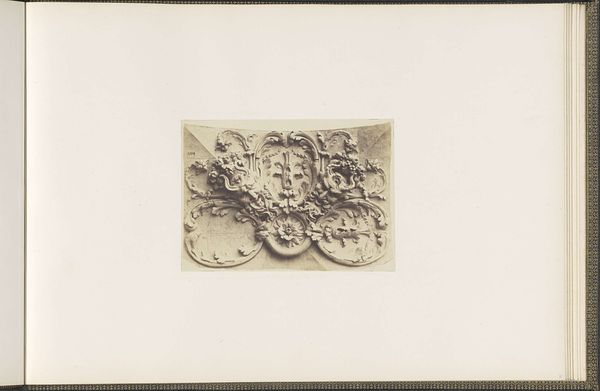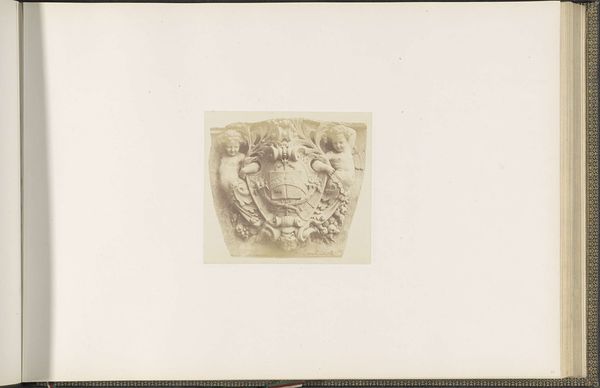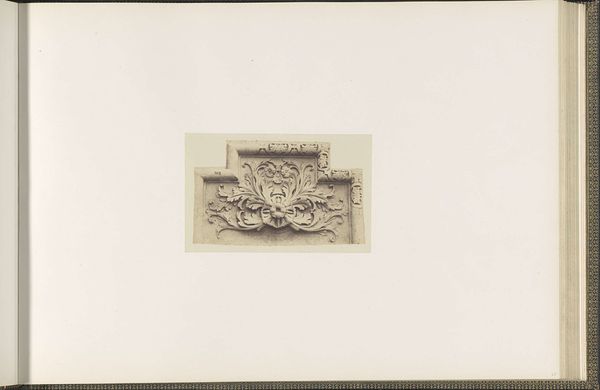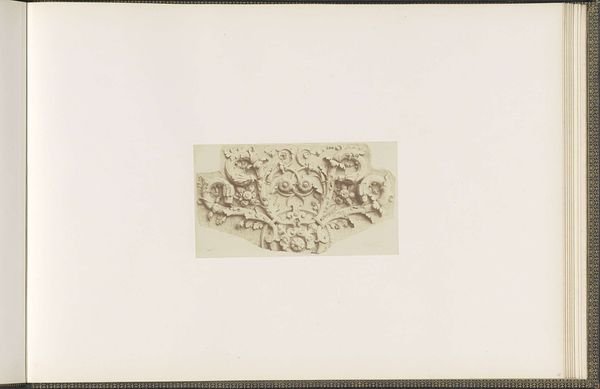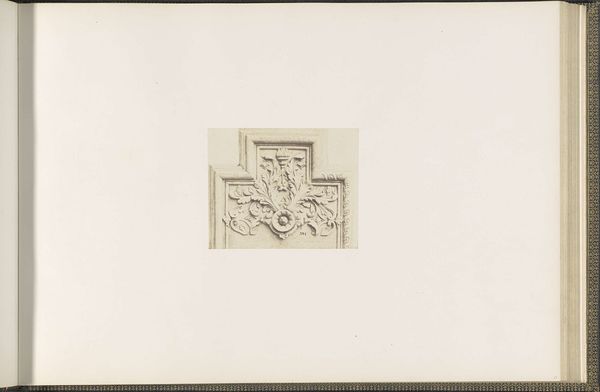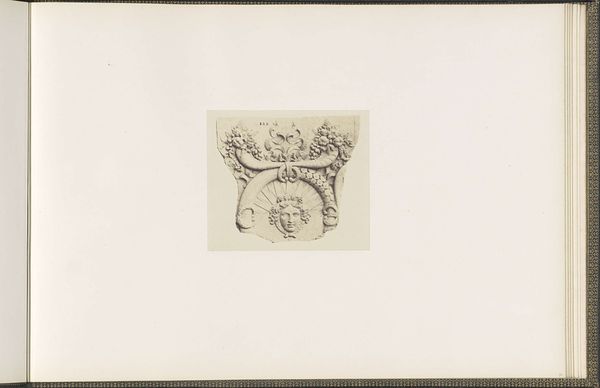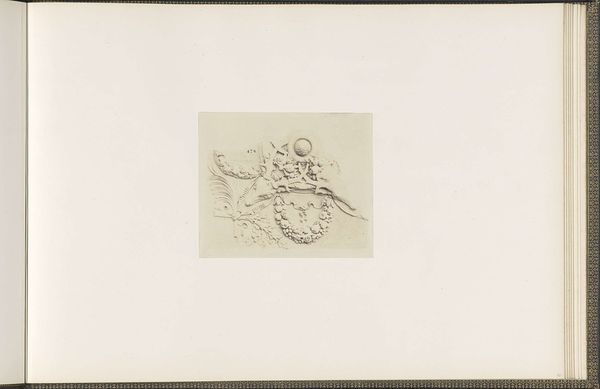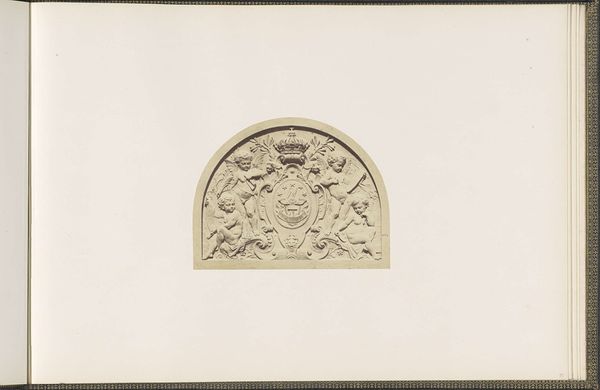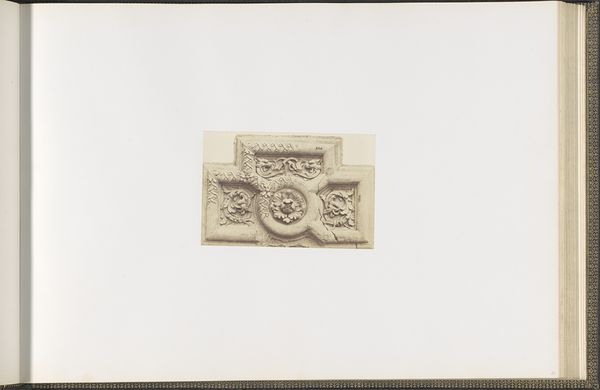
Gipsmodel voor een sluitsteen van het Palais du Louvre door Jules Lafrance c. 1855 - 1857
0:00
0:00
edouardbaldus
Rijksmuseum
print, photography, sculpture, gelatin-silver-print
#
portrait
#
neoclacissism
# print
#
photography
#
sculpture
#
gelatin-silver-print
Dimensions: height 376 mm, width 523 mm
Copyright: Rijks Museum: Open Domain
Edouard Baldus captured this photographic image of a plaster model for a keystone by Jules Lafrance. The keystone, a wedge-shaped element at the crown of an arch, is here adorned with symbolic motifs reflecting power and authority. Note the central figure reminiscent of classical deities, flanked by what appear to be allegorical figures, each laden with symbolic objects. These evoke notions of justice, prosperity, and military strength – virtues associated with the state. Such imagery extends back to antiquity, to the Roman Empire, where similar motifs were deployed to legitimize imperial rule. In the Renaissance, we see a rebirth of these classical themes in the construction of state power, subtly manipulating the collective memory. This process is not linear but cyclical: these symbols are continually resurfacing, evolving, and taking on new meanings in different historical contexts. The emotional and psychological power embedded in these images engages viewers on a subconscious level, reinforcing the ideological underpinnings of state authority.
Comments
No comments
Be the first to comment and join the conversation on the ultimate creative platform.
